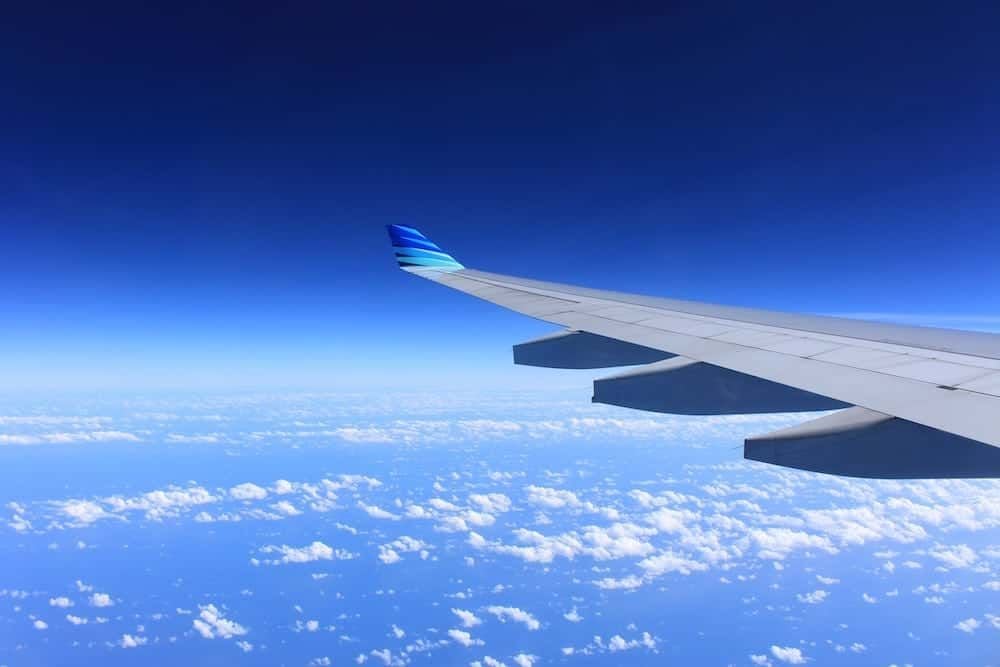
The impact on climate change of passenger jet contrails is set to triple in the next three decades, with Britain in the firing line for the biggest effect, according to new research.
The wispy, artificial clouds triggered by condensation may look pretty – but they are fuelling global warming.
They serve as a blanket by trapping heat emitted from the ground – raising temperatures, say scientists.
This will become three times worse by 2050 due to the increase in air traffic activity – expected to be four times larger by then.
A slight shift of flight routes to higher altitudes will also play a part, as this will favour the formation of contrails in the tropics.
But the impact on climate due to the icy clouds will be strongest over Britain, the US and the rest of Europe. These are the busiest air traffic areas in the world.
Asia will also suffer badly.
The pretty white streaks form high in the atmosphere when the mixture of water vapour in the craft’s exhaust and the air condenses and freezes.
They spread into extensive ‘cirrus clouds’ that help bake the Earth because they reflect less sunlight.
But the threat they pose to the environment has been largely neglected in schemes to offset aviation emissions.
This is despite contrails contributing more to global warming than all CO2 emitted by aircraft since the start of aviation.
Lead author Dr Lisa Bock, of the Institute of Atmospheric Physics, Bavaria, said: “It is important to recognise the significant impact of non-CO2 emissions, such as contrail cirrus, on climate and to take those effects into consideration when setting up emission trading systems or schemes like the Corsia agreement.”
The new international system, established by the United Nations, is the first time a single industry sector has agreed to a global measure to tackle climate change.
It aims to offset air traffic carbon emissions from 2020 but ignores the non-CO2 issues – such as the icy contrail cirrus clouds.
It changes the cloudiness of the skies, which creates an imbalance in a phenomenon known as ‘radiative forcing’.
That is the warming effect on our climate of all greenhouse gases. The larger this is, the more significant the impact on climate.
In 2005, air traffic made up about five percent of all manmade radiative forcing – with contrails being the largest contributor to aviation’s influence.
The study published in Atmospheric Chemistry and Physics found the problem can no longer be neglected.
Dr Bock and lab colleague Dr Ulrike Burkhardt worked out it is set to soar threefold by the middle of the century.
And this increase is predicted to be faster than the rise in CO2 radiative forcing since expected fuel efficiency measures will reduce emissions.
Contrails’ main impact is that of warming the higher atmosphere at air traffic levels and changing natural cloudiness.
But exactly how large their effect on surface temperature and possibly on rain and snowfall due to the cloud modifications is unclear, says Dr Burkhardt.
Added Dr Bock: “There are still some uncertainties regarding the overall climate impact of contrail cirrus and in particular their impact on surface temperatures because contrail cirrus themselves and their effects on the surface are ongoing topics of research. But it is clear they warm the atmosphere.”
Using biofuels and other clean energy sources to power passenger jets would solve part of the problem, said the researchers.
Reducing the number of soot particles emitted by aircraft engines decreases the number of ice crystals in the trails, which in turn lessens the climate impact.
But Dr Burkhardt said: “Larger reductions than the projected 50% decrease in soot number emissions are needed.”
And even slashing them by 90 percent would likely not be enough to limit it to 2005 levels, she said.
Rerouting flights to avoid regions particularly sensitive to the effects of contrail formation has also been suggested.
But this could result in increases in long-lived CO2 emissions, in particular given the uncertainties in estimating the climate impact of contrail cirrus.
The researchers say measures to reduce soot emissions would be preferable to minimise the overall radiative forcing of future air traffic since they do not involve an increase of CO2 emissions.
Added Dr Burkhardt: “This would enable international aviation to effectively support measures to achieve the Paris climate goals.”
The Paris Agreement hopes to limit the increase in global average temperature to 1.5°C above pre-industrial levels to reduce the effects of climate change.
https://www.thelondoneconomic.com/news/tory-minister-grabs-woman-protesting-climate-change-by-the-throat-at-bankers-banquet/21/06/